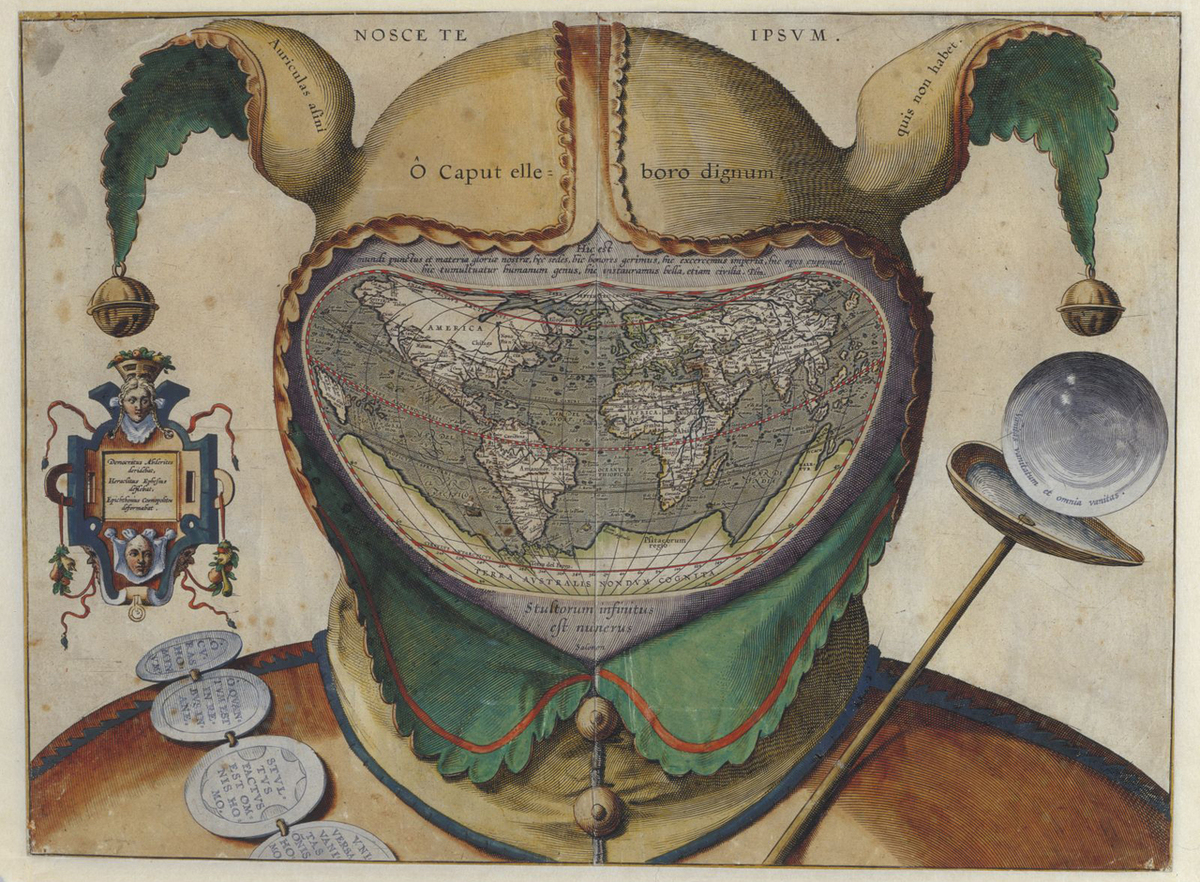Abraham Ortelius, The World under a Fool’s Cap (c. 1587)
Abstract
This map from Abraham Ortelius’ Theatrum orbis terrarum from 1587 represents the world as the face of a hooded fool. The motto “Nosce te ipsum” (know thyself) refers to the way in which people form an image of the world – whether through thought or the power of imagination. The other Latin inscriptions speak to the quest for worldly power and the transience of cartographic knowledge. The map reminds viewers to question their own worldview and to strive for self-knowledge (i.e. not be a fool).
Source

Source: World map as the face of a hooded fool, from Abraham Ortelius, Theatrum orbis terrarum (1587). Colored copperplate engraving, c. 1587. Print Collection, German National Museum, Nuremberg. http://objektkatalog.gnm.de/objekt/La213
© Germanisches Nationalmuseum, Photograph: Monika Runge
Further Reading
Tanja Michalsky, Projektion und Imagination: Die niederländische Landschaft der Frühen Neuzeit im Diskurs von Geographie und Malerei. Munich: Fink, 2011.
Rodney W. Shirley, The Mapping of the World. Early Printed World Maps 1472-1700. London: Holland Press, 1984.